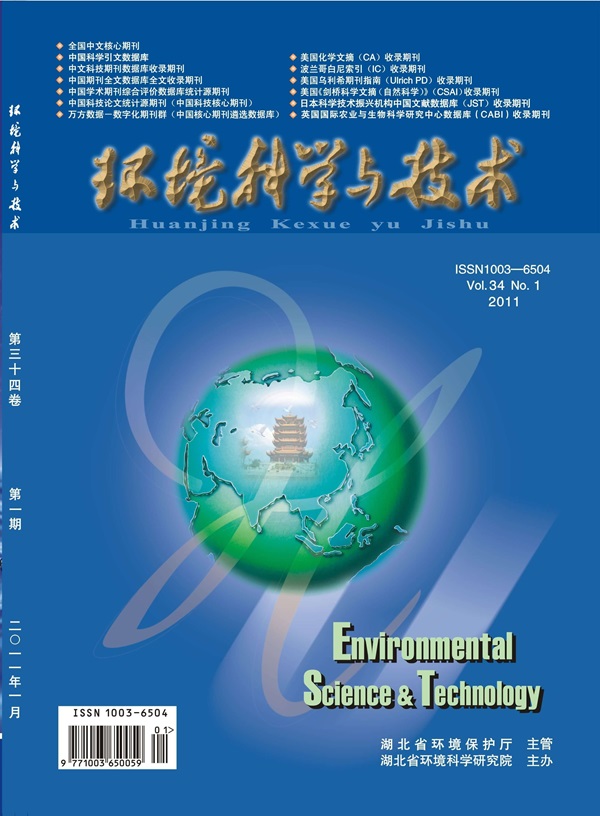Microalgae Enhances the Adaptability of Epiphytic Bacteria to Sulfamethoxazole Stress and Proliferation of Antibiotic Resistance Genes Mediated by Integron
IF 10.8
1区 环境科学与生态学
Q1 ENGINEERING, ENVIRONMENTAL
引用次数: 0
Abstract
The transmission of ARGs in the microalgae-associated epiphytic bacteria remains unclear under antibiotic exposure, apart from altering the microbial community structure. In this study, Chlorella vulgaris cocultured with bacteria screened from surface water was examined to explore the spread of ARGs in the presence of sulfamethoxazole (SMX). The extracellular polymers released by Chlorella vulgaris could reduce antibiotic-induced collateral damage to bacteria, thus increasing the diversity of the microalgae-associated epiphytic bacteria. The abundances of sul1 and intI1 in the phycosphere at 1 mg/L SMX dose increased by 290 and 28 times, respectively. Metagenomic sequencing further confirmed that SMX bioaccumulation stimulated the horizontal transfer of sul1 mediated by intI1 in the microalgae-associated epiphytic bacteria, while reactive oxygen species (ROS)-mediated oxidative stress induced the SOS response and thus enhanced the transformation of sul1 in the J group. This is the first study to verify that microalgae protect bacteria from antibiotic damage and hinder the spread of ARGs mediated by SOS response, while the transfer of ARGs mediated by integron is promoted due to the bioaccumulation of SMX in the phycosphere. The results contribute to present comprehensive understanding of the risk of ARG proliferation by the presence of emerging contaminants residues in river.

微藻类增强附生细菌对磺胺甲噁唑压力的适应性以及由 Integron 介导的抗生素耐药基因的增殖
除了改变微生物群落结构外,抗生素暴露下与微藻相关的附生细菌中 ARGs 的传播情况仍不清楚。在本研究中,研究人员将小球藻与从地表水中筛选出的细菌共培养,以探索在磺胺甲噁唑(SMX)存在下 ARGs 的传播情况。小球藻释放的胞外聚合物可减少抗生素对细菌造成的附带损害,从而增加微藻附生细菌的多样性。在 1 毫克/升 SMX 剂量的条件下,植球中 sul1 和 intI1 的丰度分别增加了 290 倍和 28 倍。元基因组测序进一步证实,SMX 生物蓄积刺激了微藻相关附生细菌中由 intI1 介导的 sul1 水平转移,而活性氧(ROS)介导的氧化应激诱导了 SOS 反应,从而增强了 J 组中 sul1 的转化。这是首次研究证实微藻能保护细菌免受抗生素的损害,并阻碍由 SOS 反应介导的 ARGs 的传播,而由整合素介导的 ARGs 的转移则因 SMX 在植物圈中的生物累积而得到促进。这些结果有助于全面了解河流中新出现的污染物残留物所带来的 ARG 增殖风险。
本文章由计算机程序翻译,如有差异,请以英文原文为准。
求助全文
约1分钟内获得全文
求助全文
来源期刊

环境科学与技术
环境科学-工程:环境
CiteScore
17.50
自引率
9.60%
发文量
12359
审稿时长
2.8 months
期刊介绍:
Environmental Science & Technology (ES&T) is a co-sponsored academic and technical magazine by the Hubei Provincial Environmental Protection Bureau and the Hubei Provincial Academy of Environmental Sciences.
Environmental Science & Technology (ES&T) holds the status of Chinese core journals, scientific papers source journals of China, Chinese Science Citation Database source journals, and Chinese Academic Journal Comprehensive Evaluation Database source journals. This publication focuses on the academic field of environmental protection, featuring articles related to environmental protection and technical advancements.
 求助内容:
求助内容: 应助结果提醒方式:
应助结果提醒方式:


